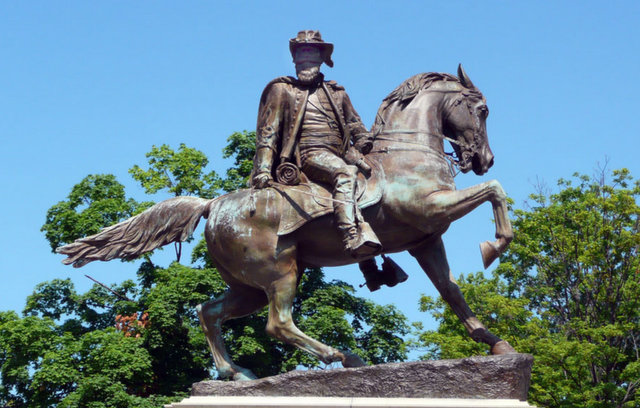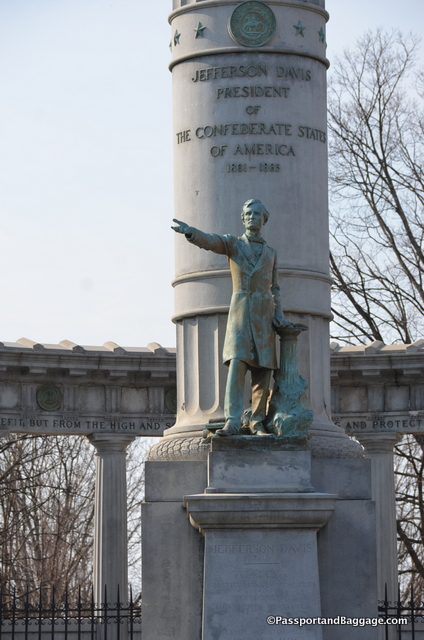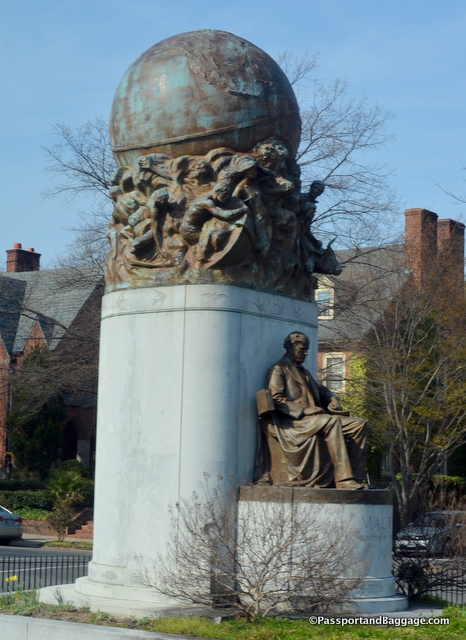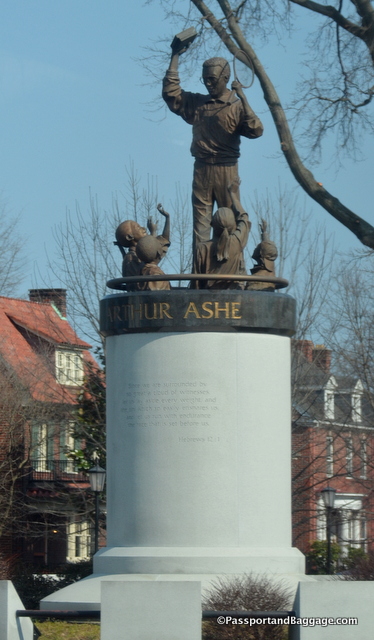Monument Avenue
Richmond Virginia
March 2017
Monument Avenue is either a bone of contention or an art gallery, and stirs emotions in all. Listed on the National Register of Historic Places in 1970 and a National Historic Landmark in 1997, making it, more than likely, an unchangeable force, as the NHL listing is the highest national designation a landmark can receive. It is also the only residential boulevard with monuments of this scale to survive almost unaltered to the present day.
As our guide, Richard Guy Wilson stated: “it may be a place of residences and churches, a street of movement and communication, but ultimately Monument Avenue is the site of memorials to the Confederacy.”
This tree-lined, grassy mall, divides the east- and westbound traffic and is punctuated by statues memorializing Virginian Confederate participants of the Civil War, Robert E. Lee, J.E.B. Stuart, Jefferson Davis, Thomas “Stonewall” Jackson, and Matthew Fontaine Maury, as well as Arthur Ashe, a Richmond native and international tennis star.
The Robert E. Lee statue was created by Anton Mercié with the pedestal by architect, Paul Pujol. It stands 21 feet tall and weight around 12 tons. It sits upon a forty foot high granite pedestal.
Mercié entered the École des Beaux-Arts, Paris, and studied under Alexandre Falguière and François Jouffroy, and in 1868 gained the Grand Prix de Rome at the age of 23. His first great popular successes were the David and Gloria Victis, which was shown and received the Medal of Honour of the Paris Salon.
J.E. B. Stuart was created by Frederick Moynihan. The sculptor was inspired by a sculpture of the British General Outram done by John Foley for Calcutta, India. The sculpture was unveiled in 1907at the largest Confederate reunion ever held.
Frederick Moynihan was an American sculptor, born on the Isle of Guernsey in 1843. He died at his New York City studio on January 9, 1910. Moynihan studied at the Royal Academy in London before immigrating to the United States. He is best remembered for creating monuments commemorating the American Civil War.
The Jefferson Davis sculpture by Edward Valentine is the most controversial of all the sculptures on Monument Avenue. Unveiled in 1907 it sits in front of an exedra by architect William Noland. There is a 65-foot tall doric column topped with a bronze allegorical figure named Vindicatrix.
According to James Ira Deese Miller author of A Guide to the South, “the monument typifies the vindication of Mr. Davis and the cause of the Confederacy for which he stood before the world, the leading inscripton being “Deo Vince” (God will vindicate)…Vindicatrix represents the whole spirit of the movement.”
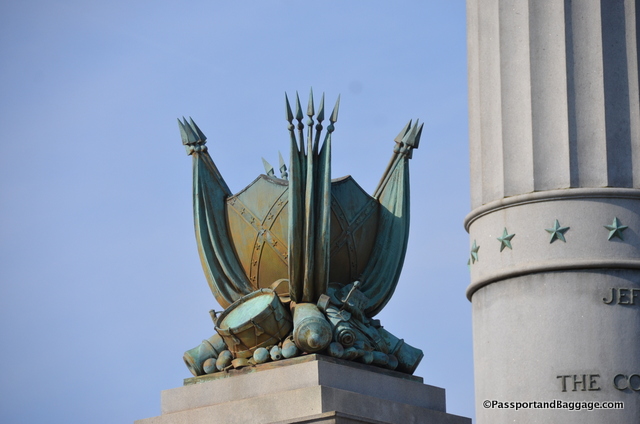 In the statue, Davis is represented as an orator. The two end piers are topped with a bronze group of war trophies, consisting of Confederate shields and flags, together with other emblems of land and naval warfare.
In the statue, Davis is represented as an orator. The two end piers are topped with a bronze group of war trophies, consisting of Confederate shields and flags, together with other emblems of land and naval warfare.
Edward Valentine was born on November 12, 1838 in Richmond, Virginia. He studied in Europe: in Paris with Couture and Jouffroy, in Italy under Bonanti, and with August Kiss in Berlin. He died on October 19, 1930 in Richmond, Virginia.
William Churchill Noland (1865-1951) was a partner of Baskervill and Son, a firm that has maintained a consistent history as one of the most successful Richmond, VA, architectural firms since its establishment in 1897. The firm, originally called Noland and Baskervill, was the partnership of architect Noland and electrical engineer Henry Baskervill (1867-1930).
Stonewall Jackson, unveiled in 1919 was sculpted by Frederick William Sievers. Frederick William Sievers (1872–1966) was an American sculptor, born in Fort Wayne, Indiana. Sievers moved to Richmond, Virginia, as a young man, furthering his art studies by attending the Royal Academy of Fine Arts in Rome and the Académie Julian in Paris.
The statue of Matthew Fontaine Maury was also sculpted by Frederick William Sievers and was unveiled in 1929. Sievers composed the statue with images of water, land, and sky, which relate to Maury’s achievements in oceanography, navigation, and meteorology. Jellyfish are sculpted in the arms of Maury’s chair, and bats, swallows, and fish encircle the base supporting the globe. Stylistically, the statue (which faces eastward toward the Atlantic Ocean) is perhaps the most complex of all the monuments on Monument Avenue.
The most recent statue to be erected on Monument Avenue is of local tennis great, Arthur Ashe. This sculpture is by Paul DiPasquale and was unveiled in 1966.
The bronze statue of Arthur Ashe faces west with four children facing east. The statue shows him holding books in his left hand and a tennis racket in his right hand to illustrate how he encouraged the importance of sports and education. The 12-foot bronze statue stands on a 87,000-pound granite block quarried in Georgia.
Paul DiPasquale is an American artist. He graduated from the University of Virginia, and trained at the Boston Architectural Center, he received his Masters degree in Sculpture from Virginia Commonwealth University in 1977.
I apologize for the quality of the photos, they were taken through the window of a moving bus.


